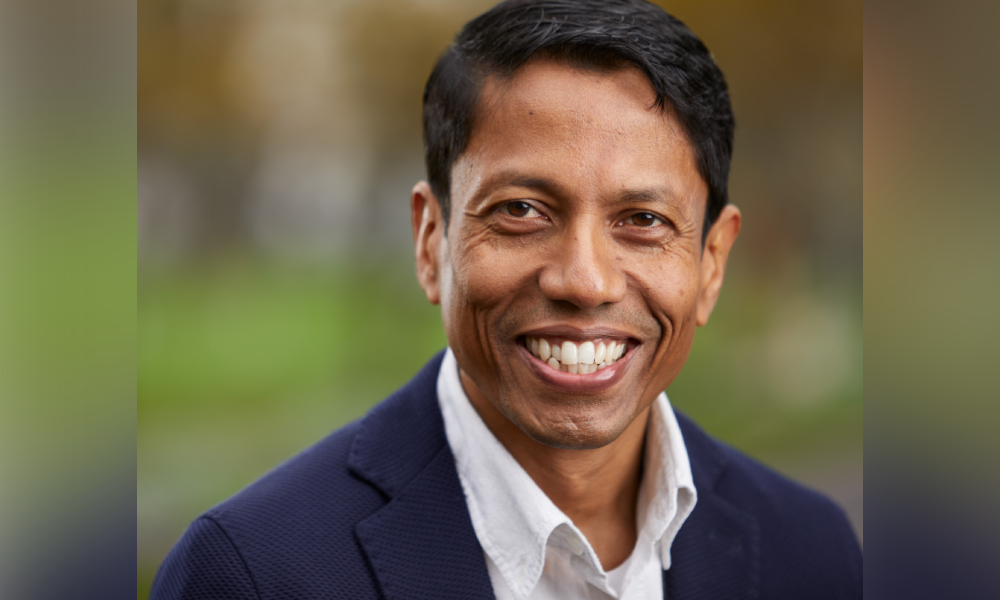
Motoring giant’s VP HR on the value of taking the slow lane

As one of the country’s biggest auto employers, Ford Australia is a household name when it comes to cars. But during the pandemic, the motor company began manufacturing something else.
Ford churned out up to 100,000 face shields which were donated to frontline workers health workers during the early stages of the crisis, employing around 50 assembly staff to undertake the project.
Speaking to HRD, Ford’s vice president of HR for ANZ, Anoop Chaudhuri, said it was one example of how the company pivoted to support the community as Australia battled COVID-19.
With around 2,500 employees in Australia, including many who were essential workers and could not do their jobs from home, Ford faced a huge health and safety challenge when the scale of the pandemic became apparent in early March.
“The primary principal value that has governed every decision right from the day we sent our people home to coming back has been the health, safety and wellbeing of our employees and our community,” Chaudhuri said.
“We immediately formed an emergency leadership group that included our MD and CEO, our senior business leaders from engineering and product development, key directors from the board including myself, the finance director, communications director and legal.
“The whole purpose of bringing this decision-making group together was to meet on a day-by-day basis to keep track of what was happening with COVID-19, what we needed to do to enable people to work from home and how we could keep our on-site staff safe.”
Read more: HR expert warns misconceptions remain around return to work during COVID-19
One of the strongest tools in Ford’s armoury was the company’s in-house medical team who took a lead role in advising health and safety strategy based on the scientific data available at the time. Ford brought in face masks as compulsory PPE for employees very early on, before it was advised by the government. Chaudhuri said another initial response was HR’s creation of the COVID-19 safety protocols playbook.
“We had essential workers on site because we have to keep our operations running. From day one, not only did we have face masks as mandatory equipment, but we also brought in a whole load of additional measures,” he said.
“Firstly, we have a very strict protocol in place for managing who is permitted on site at any given day and all of that decision making is driven by the needs of the business.
“Secondly, for those who are permitted to be on site, there is a daily questionnaire every employee has to go through before they walk in.”
The survey, similar to those now used in cafes and restaurants, asks employees to confirm they have not visited any hotspots nationwide or are experiencing any symptoms related to COVID-19. Employees also have their temperature taken. If they are cleared to enter the site by the security team, they are then given a coloured wristband to indicate that they have gone through the protocols.
“It's very important not just to say we've implemented these measures, but for people to feel safe,” Chaudhuri said. “That has been a very visible way of demonstrating, to each other and the entire community within the company, what we are doing to really uphold the values in terms of health, safety and wellbeing.”
Read more: My staff don’t want to return to work - coming back after COVID-19
After the hard work put in to keep sites open and running over the last year, Chaudhuri said scaling up any return-to-work plans at Ford will be done “slowly and deliberately”. The state government’s COVID-safe rules in Victoria, where Ford’s various sites are based, allows for 75% of office workers to return. But Chaudhuri said Ford is taking a conservative approach. Currently, they have 35-38% of employees on site on any given day.
“We don't want to jeopardise our employees working on site, their families and the community so it’s a very deliberate decision we have taken to really bring people back based on a business case and a business need,” he said.
But beyond health and safety, COVID-19 has made Ford rethink how, where and when employees get work done. A new policy, Flex at Ford, looks at how the business can leverage opportunity for flexibility going forward as they reimagine the new normal.